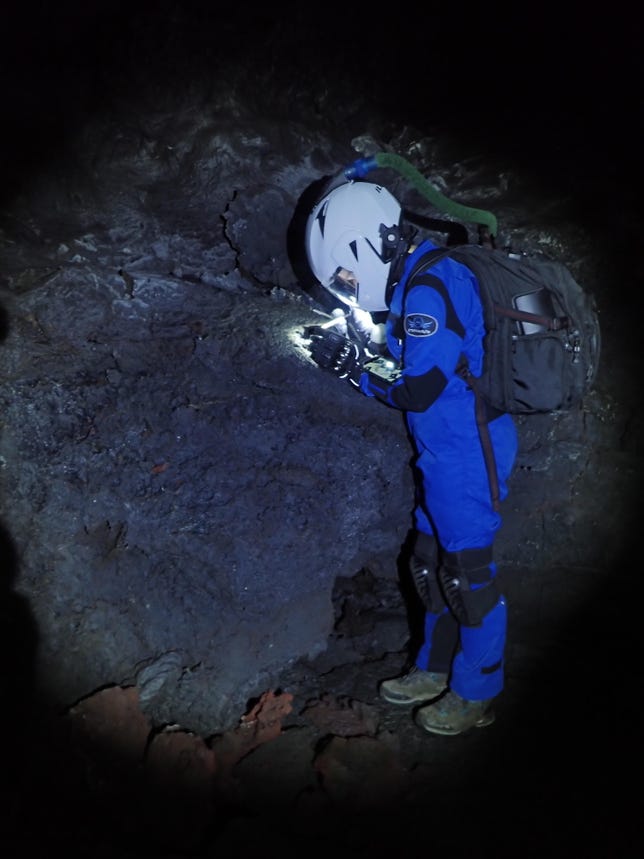
NASA's MRO stared into the abyss.
NASA/JPL/UArizonaMars is all the rage right now. NASA's Perseverance rover is rolling across the plains of Jezero Crater, making oxygen and watching from afar as the Ingenuity helicopter makes the first powered flight on another world. In a few short weeks, China will attempt to land its rover, Zhurong, on the planet's surface.
Explored from both the sky and the ground, Mars is already revealing itself to planetary scientists and -- one day -- there's a possibility humans will be on the ground there, too. (Though, worryingly, some suggest that's a one-way ticket.)
To understand how human exploration of the red planet might occur, astronauts are already simulating the experiences on Earth. At the Hawaii Space Exploration Analog and Simulation or HI-SEAS, astronauts live as if they're on the surface of Mars, roaming around Hawaii's Mauna Loa volcano. Just like Mars has dark, freaky pits, so does the region around Mauna Loa.
These "pits" are skylights dotted on Mars surface and they lead to giant subterranean labyrinths known as lava tubes. The tubes are essentially big caves, carved into the ground by flowing lava from volcanic activity. Being underground, the tubes could shield explorers from the harsh conditions on the surface of Mars (or the moon), protecting them from radiation and extreme temperatures.
In Hawaii, the HI-SEAS crew have been exploring the lava tubes in cumbersome extra-vehicular activity, or EVA, suits. On Tuesday, at the virtual European Geoscience Union General Assembly, HI-SEAS scientists discussed some of the challenges identified working in the tubes in this protective and bulky gear, just like they might on Mars and the moon.

A HI-SEAS crewmember exploring the lava tubes at Mauna Loa.
HI-SEAS"Doing research in suits under EVA constraints makes everything much more difficult to do, and it all takes three times longer," said Michaela Musilova, director of HI-SEAS.
The bulky suits aren't great for dexterity, especially if you're trying to collect pristine samples from tube walls and floors.
That could be a significant stumbling block in the future, because lava tubes may harbor signs of life on Mars, just like they do on Earth. You don't want your puffy gloves ruining your chances of detecting life on another planet.
When CNET's Lexy Savvides tried on the suit and took on Hawaii's Mauna Loa in 2019, she described just how difficult it was to move around and a pride-wounding stumble.
The HI-SEAS research, Musilova notes, will help understand how lava tube research could one day be conducted on Mars and the moon.
"We need to train extensively on Earth to figure out the best methods and create the best EVA suits so that we'll be able to perform this kind of research on the moon and Mars one day," she said.
Follow CNET's 2021 Space Calendar to stay up to date with all the latest space news this year. You can even add it to your own Google Calendar.
"much" - Google News
April 28, 2021 at 10:21AM
https://ift.tt/32TJsR5
Exploring Mars' dark, freaky pits will be much harder in a spacesuit - CNET
"much" - Google News
https://ift.tt/37eLLij
Shoes Man Tutorial
Pos News Update
Meme Update
Korean Entertainment News
Japan News Update
Bagikan Berita Ini















0 Response to "Exploring Mars' dark, freaky pits will be much harder in a spacesuit - CNET"
Post a Comment